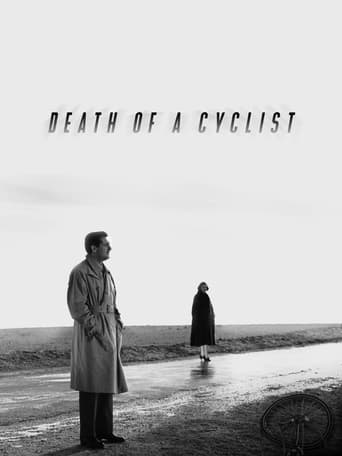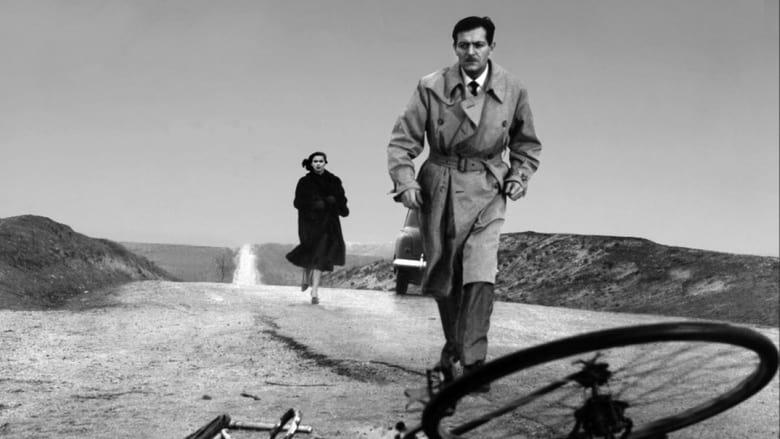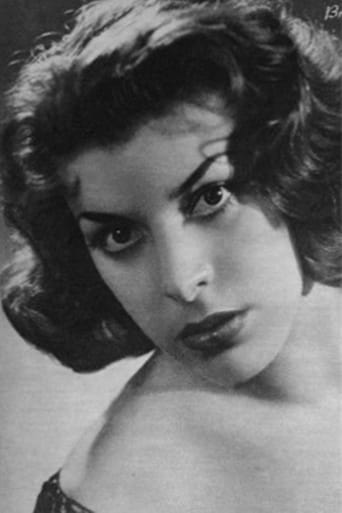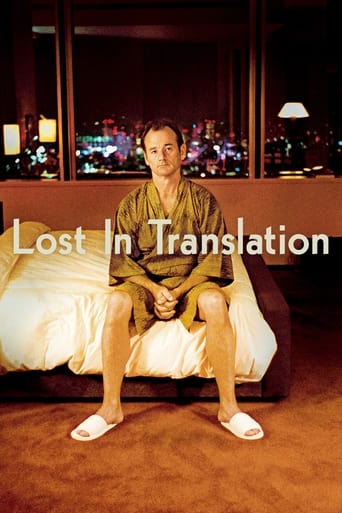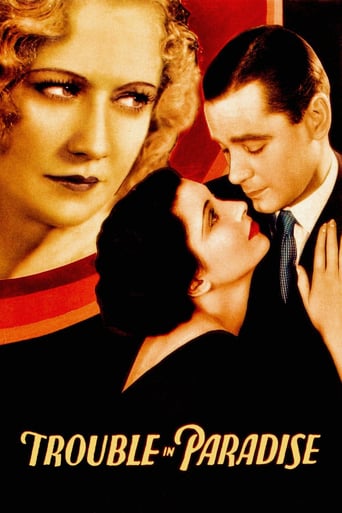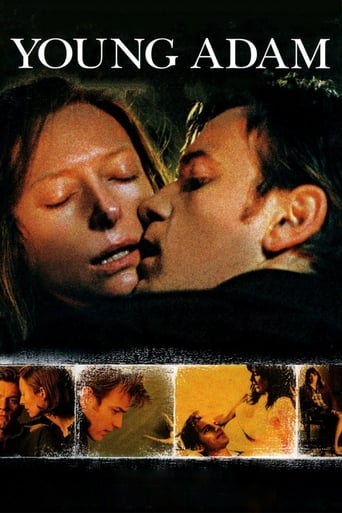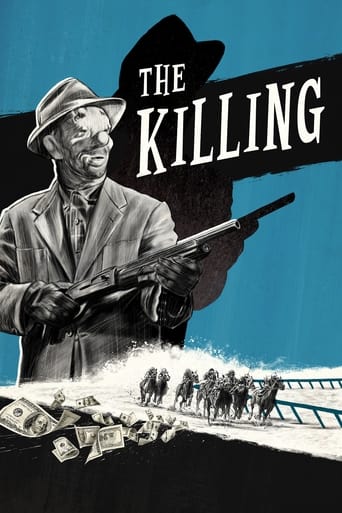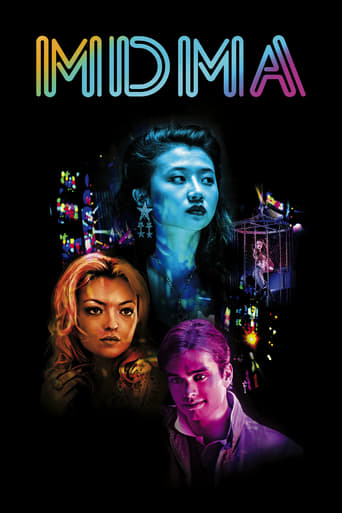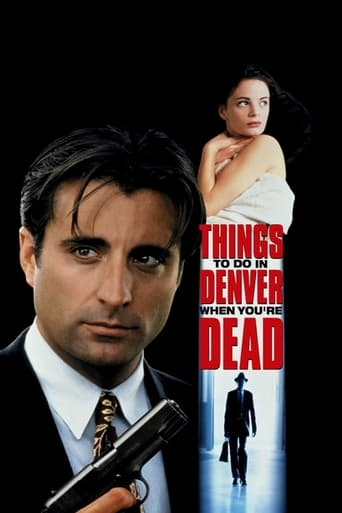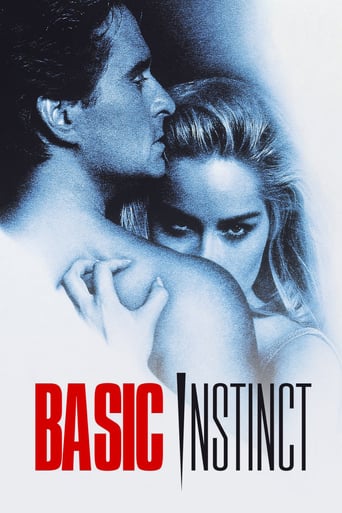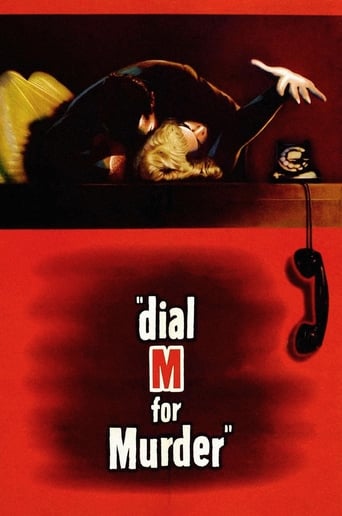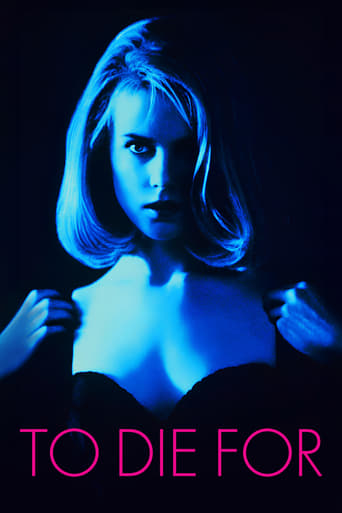Death of a Cyclist (1958)
A couple having an affair strike a bicyclist with their car and do not offer aid out of fear of their relationship being exposed.
Watch Trailer
Cast


Similar titles
Reviews
An action-packed slog
It's a mild crowd pleaser for people who are exhausted by blockbusters.
It isn't all that great, actually. Really cheesy and very predicable of how certain scenes are gonna turn play out. However, I guess that's the charm of it all, because I would consider this one of my guilty pleasures.
This is one of the best movies I’ve seen in a very long time. You have to go and see this on the big screen.
I guess the film tries to show that the bourgeois family is full of lies. More so, bourgeois woman. I am not sure if the emphasis on bourgeois-ness is intentional though. The story told is an age-old story, and the setting --i.e. the upper class environment-- is still a puzzle for me. As I said, I am not sure whether this setting was intentional or not. The ending makes you think that it is not.Unlike the change of tone of the music used towards the end, suspense does not continue in a strongly manner. Plot runs as it is expected. I was hoping to get a little bit more about the witty intellectual but it turns out it is just a medium of distraction for the audience. One might think that it is what accelerates the tension, but I hardly think so. I also think that husband's passive role and Juan's conscientious pain which gives him hard times do not coalesce in a way that it makes more sense.At the the end, movie ends up with a women seeking to preserve her current social status no matter the cost is. As a moral relief, director kills her so that we can finish the movie in peace. Despite the well-organized structure of the movie, I think that moral guilt of the man vs. immorality of the women is not a nice story. Nevertheless, I should say that the husband who does not want to know much but willing to forget everything fits to the general picture about him depicted earlier.
An excellent film and I've enjoyed the comments and observations. There's really not a lot I can add that hasn't already been written other than the following:For the most part, I don't see how the ending of this film can be classified as either being 'over-the-top' or as a 'deus ex machina'. I simply see it as the logical function of the analytical geometry motif Bardem employs throughout the film. Remember, Juan is an assistant professor of Analytical geometry and Bardem finds a number of ways to reinforce the idea throughout this fine crafted 1955 Spanish B&W film. In the opening scene we see a lone cyclist ride away from us and, essentially, out of the frame, but he never really leaves the film as he provides both a question and an answer to some of the many riddles this film presents to us. Early on, we see a mathematical formulation written on blackboard which shows a completed, albeit, circular construction: it is a wrong that is eventually righted, but, as in life, there is a cost attached. The music itself has a certain geometry and it too plays a role in the film. I may be wrong here but I don't recall Rafa ever completing an entire piece of music while at the piano.Juan eventually realizes his mistake (thanks in part to the incident set in motion by the blackboard scene) and wants to do what he thinks is the right thing by trying to correct the mistake, but there are just too many outside factors at play here for his solution to work.However, the geometrical motif is eventually completed - in its own ironic fashion - at the end of the film when the bicyclist apparently does the right thing and reports the accident.So,with that in mind, I think the ending is appropriate. Please note that I'm not saying that its the right ending or even the wrong one, just that its appropriate.But, if I've learned anything from watching Film Noir (and I'm not saying this is one -- although it does has a number of similar elements) sometimes you just have to let the idea of a clean & tidy plot go and allow the story find its own way home.Besides, there are just too many other great cinematic elements going on here - lighting, camera angles, acting, atmosphere - to enjoy rather than wondering whether or not the plot will be wrapped up in a nice pretty bow at the end.Symbolism plays a major role here as well: angular barren trees at the scene of the initial accident, athletes being timed while running around a circular track along with the ritualized marriage ceremony and funeral service -- which, in and by themselves, can be seen as a form of circular geometry as well. And, of course, there is the central issue of political allegory, but that's been discussed already. Sometimes, thanks to Hollywood, I think we tend to expect a story to have a 'neat and tidy' conclusion. As for me, I enjoy movies that are like life: because, to my way of thinking, I can't imagine all my big questions will get answered when my 'movie' ends either. peace,David"One thing led to another and then he led with his left" ~ The Dark Corner ~
Great film; a bit long. And I want a happy ending. And where is the colour?A short introduction about colour: Color or colour (see spelling differences) is the visual perceptual property corresponding in humans to the categories called red, yellow, blue and others. Color derives from the spectrum of light (distribution of light energy versus wavelength) interacting in the eye with the spectral sensitivities of the light receptors. Color categories and physical specifications of colour are also associated with objects, materials, light sources, etc., based on their physical properties such as light absorption, reflection, or emission spectra. By defining a colour space, colours can be identified numerically; for example, by their unique RGB and HSV values (see List of colours).Typically, only features of the composition of light that are detectable by humans (wavelength spectrum from 380 nm to 740 nm, roughly) are included, thereby objectively relating the psychological phenomenon of colour to its physical specification. Because perception of colour stems from the varying sensitivity of different types of cone cells in the retina to different parts of the spectrum, colours may be defined and quantified by the degree to which they stimulate these cells. These physical or physiological quantifications of colour, however, do not fully explain the psychophysical perception of colour appearance.The science of colour is sometimes called chromatics. It includes the perception of colour by the human eye and brain, the origin of colour in materials, colour theory in art, and the physics of electromagnetic radiation in the visible range (that is, what we commonly refer to simply as light).
Breaking the RulesJuan Antonio Bardem's Muerte de un ciclista (Death of a Cyclist)The Formation of a Unique Hybrid of Spanish Cinema1955. At the height of the cold war, almost twenty years under the Franco regime, Spain, a country fiercely divided by poverty and societal division prepares with the support of the United States, to enter into the United Nations. American investors arrive in Spain for the chance to buy into the developing Spanish economy. Meanwhile on a cold winter's day, dusk is falling and the Sun's dying rays hit the highway. Enrique Arízaga cycles past and off into the outlying horizon. Almost as soon as he has gone out of sight, a screeching of brakes is heard in the distance and a black car slams to a halt around the bend; the cricket chirps. A man jumps out and rushes over. On observing the cyclist is still breathing, he calls over to the woman, inside the car. She gets out and calls back over to him. The woman beckons him again to desert the scene of the accident, leaving the cyclist to die. The car moves off again disappearing towards Madrid.In the immediacy of its establishing sequence, Juan Antonio Bardem's Muerte de un ciclista (Death of a Cyclist) already outlines the foundations and circumstances behind the film's plot. An adulterous couple, Juan (Alberto Closas) and María José (Lucia Bosè) run down a cyclist on their way back to Madrid after a clandestine meeting in the outskirts. Rather than call for help the couple, fearful of the discovery of their adulterous relationship, flee the scene of the accident. Bardem's film focuses on the tribulations and strains on the characters' relationship from that point onwards and the lengths they go to keep their crimes of adultery and murder under cover.Spanish director Juan Antonio Bardem (1922-2002) explored and made use of a variety of genres within his early career. In Esa pareja feliz (1951) and ¡Bienvenido Mr Marshall! (1953), both joint ventures with contemporary Luis García Berlanga, Bardem through the conventions of comedy was able to develop a structure of parody and political satire. In Cómicos (1954), Bardem was heavily influenced by the genre of Hollywood melodrama, in particular that of films such as All About Eve (1950), a convention he would continue to develop throughout later films including Calle Mayor (1956). Throughout Muerte de un ciclista Bardem develops a compound of contrasting style and genre to represent key issues within Spanish society. Prominent themes and genres within the film include film noir and the femme fatale mould, the Hitchcock suspense thriller, Italian neo-realism and soviet montage. Bardem uses these contrasting elements directly after one another in order to create what Marsha Kinder refers to as a 'rupture' within the centrality of the plot of the Hollywood melodrama. In the same way as the unnatural cutting and contrasting imagery Bardem uses, the film is able to ideologically expose corrupt and immoral elements of the Franco regime. The focus of this essay is to explore and to investigate these various elements and analyse the way in which they come together in forming a hybrid that is unique within the history of Spanish cinema.Through the usage of a variety of contrasting elements and genre Bardem is able to ideologically expose the corrupt elements of the Franco regime. Today Muerte de un ciclista stands as a critique of the conformist values that it ridicules and attempts to tear apart. It breaks all the rules and shows the power of cinema to revolutionise daily life. In the same way as Bardem's characters of María José who breaks the conformist gender rules of Francoist Spain, Matilde who rebels against the institutional system and Juan who goes against the corruption and falseness of his class background, so too does Muerte de un ciclista rebel both by taking a stand against the corrupt Franco regime and also by breaking the rules of mainstream conventional cinema in order to present something vitally fresh and unique in Spanish film. Alfred Hitchcock once noted that it is important to know the limits of commercial cinema. Bardem is able to successfully use a clash of genre to stretch the viewer close to an absolute limit and is subsequently able to breakdown and underline the key political issues surrounding contemporary Spanish society. In the same way as the moral courage that the character of Juan is able to attain, Bardem seeks to signify the same moral fibre that the Spanish regime strove to repress. Like the broken window imagery that Bardem puts forward towards the end of the film, so too does a hole within the melodramatic centrality serve as a central element within the film's plot in order to be clashed with and torn apart. It is through this hybrid and "rupture" of genre that Juan Antonio Bardem's Muerte de un ciclista has been able to create a quintessential feat in Spanish cinema.Harrison Cohen"What need we fear who knows it, when none can call our power to account?" Lady Macbeth

